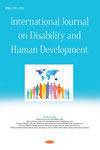People with multiple disabilities use assistive technology to perform complex activities at the appropriate time
International Journal on Disability and Human Development
Pub Date : 2016-08-01
DOI:10.1515/ijdhd-2015-0012
引用次数: 10
Abstract
Abstract Background: Persons with moderate/severe intellectual and multiple disabilities may have difficulties determining (a) the times of the day when to engage in specific activities and (b) the sequence of steps needed for those activities. Assistive technology might help them with both requirements. Methods: This study assessed an assistive technology package to (a) remind three adults with multiple (i.e. intellectual and sensory-motor) disabilities of the activities to carry out at the appropriate times of the day and (b) provide them pictorial instructions for the steps of those activities. It included a Galaxy S-3 mini smartphone (by Samsung) for delivering verbal reminders and a Microsoft Surface RT tablet for presenting pictorial instructions concerning the single steps of the activities programmed. The study was carried out according to a non-concurrent multiple baseline design across participants. Results: All three participants were successful in using both components of the technology package and managed to (a) independently start the activities at the scheduled times and (b) perform them with high levels of accuracy (i.e. with mean percentages of correct steps exceeding 90). Conclusion: A technology package may enable persons with multiple disabilities to perform complex activities at the appropriate times.多重残疾的人在适当的时间使用辅助技术来完成复杂的活动
背景:中度/重度智力残疾和多重残疾的人可能在确定(a)一天中从事特定活动的时间和(b)这些活动所需的步骤顺序方面存在困难。辅助技术可以帮助他们满足这两种需求。方法:本研究评估了一套辅助技术,以(a)提醒三名患有多种(即智力和感觉运动)残疾的成年人在一天中适当的时间进行活动,(b)为这些活动的步骤提供图片指导。它包括一部用于口头提醒的Galaxy S-3迷你智能手机(由三星(Samsung)生产),以及一部微软(Microsoft)的Surface RT平板电脑,用于显示有关所编程活动的单个步骤的图片说明。本研究采用非并发多基线设计进行。结果:所有三名参与者都成功地使用了技术包的两个组成部分,并设法(a)在预定的时间独立启动活动,(b)以高水平的准确性执行活动(即正确步骤的平均百分比超过90)。结论:一揽子技术可以使多重残疾的人在适当的时间进行复杂的活动。
本文章由计算机程序翻译,如有差异,请以英文原文为准。
求助全文
约1分钟内获得全文
求助全文

 求助内容:
求助内容: 应助结果提醒方式:
应助结果提醒方式:


